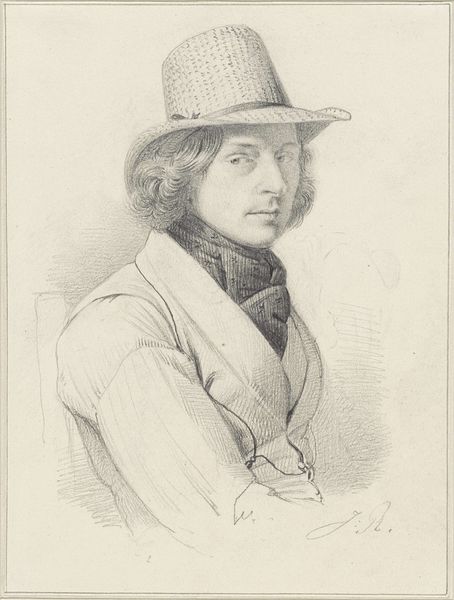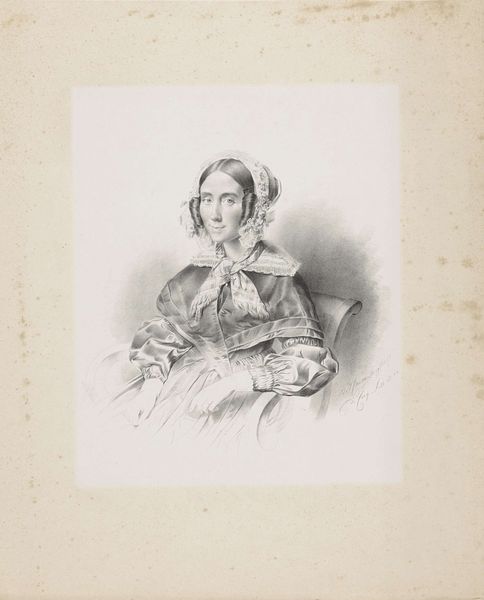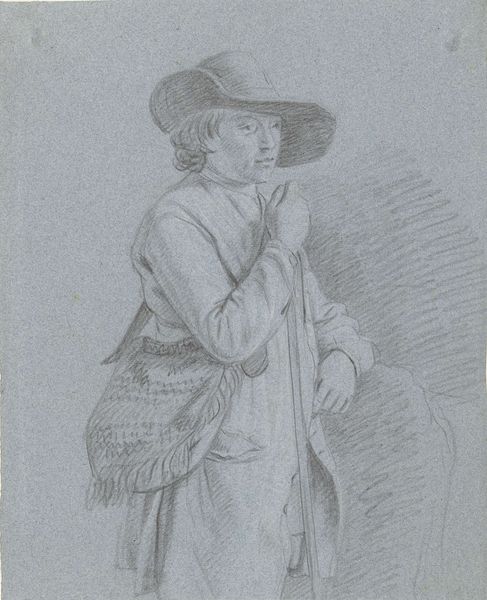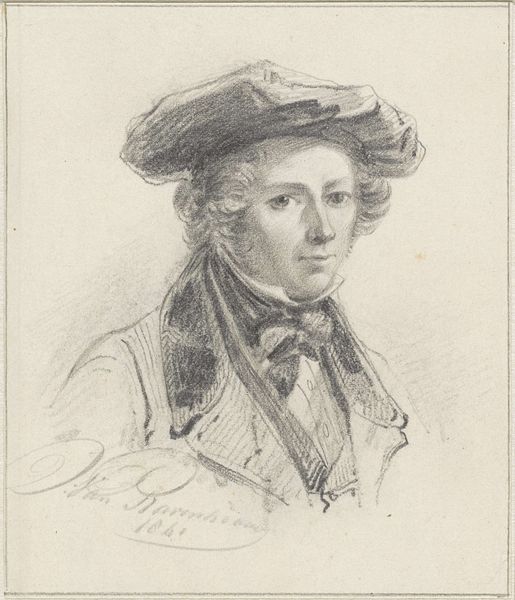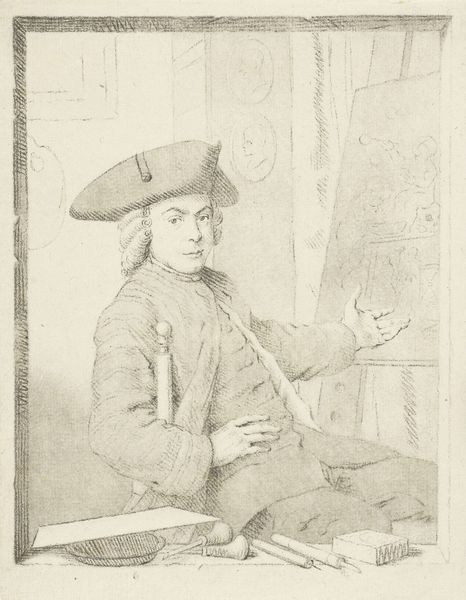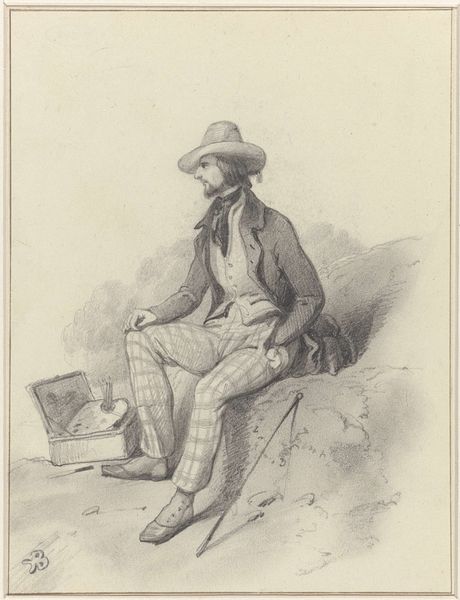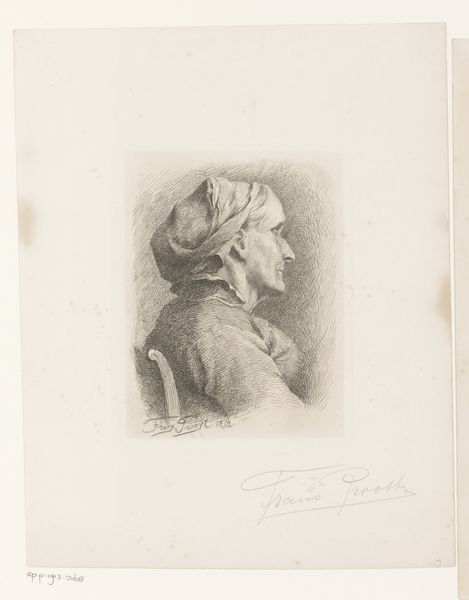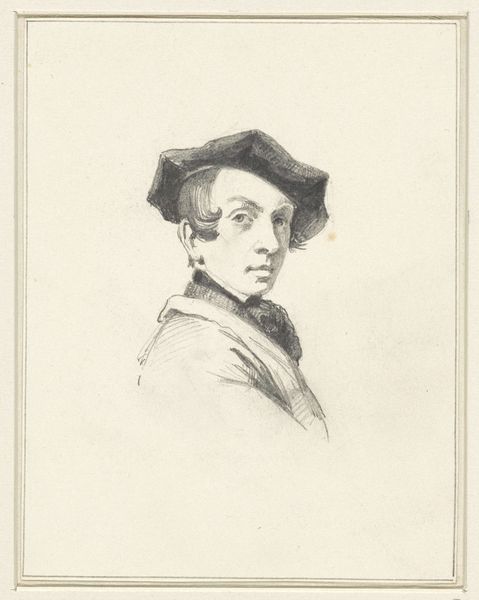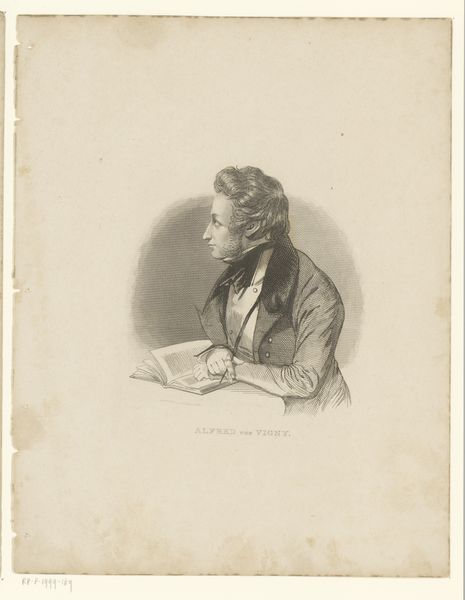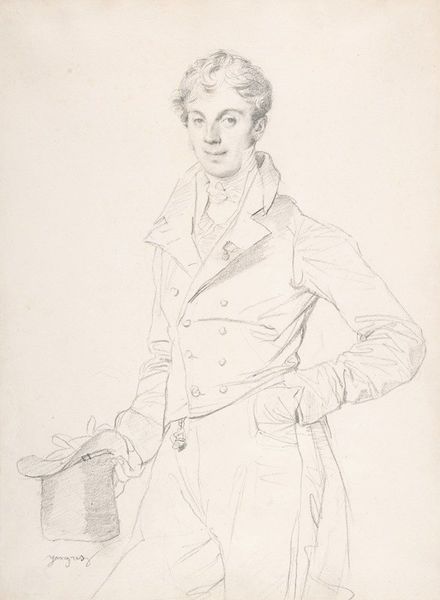
Zelfportret van Pieter Frederik van Os voor schildersezel 1818 - 1892
0:00
0:00
Dimensions: height 220 mm, width 155 mm
Copyright: Rijks Museum: Open Domain
Curator: Pieter Frederik van Os offers us a glimpse into his artistic practice in this self-portrait, a pencil drawing likely created between 1818 and 1892. Editor: There's a delicate, almost fragile quality to this image, wouldn’t you agree? The soft pencil lines create a sense of quiet contemplation. Curator: Indeed. It's remarkable how he captures light and texture with such simple means. You can almost feel the fabric of his beret and the smooth surface of his palette. What strikes me is that van Os is consciously crafting an image of the artist, presenting himself as a professional. Editor: It’s also what he chooses not to include that shapes the viewing experience. There's no paint smeared on his clothing, he doesn’t show his hand holding a brush, and his canvas, his source of production, faces away from us; a means of creating space between artist and creation. Is this part of crafting a certain aesthetic and elevating the position of the artist, but at what cost? Curator: I see it as a strategic performance of the artistic self. This wasn't necessarily a quick sketch but more like a considered visual statement on the dignity and refinement of the artist's profession during that period. There is much thought in how the image functions as an artifact of social context. The materials reflect economic conditions impacting artist's commissions. The paper, the pencil—accessible tools empowering broader participation and potentially challenging the patronage system with expanding independent markets. Editor: I appreciate your emphasis on context. Yet I find myself drawn to the visual intricacies first and foremost. Look at the subtle play of lines and shadows on his face, rendering its inherent sense of romantic self-reflection, and look at his controlled composition, the use of diagonal lines created by the easel which pulls the eye through the composition. Curator: Precisely, though this artistic depiction still plays into market dynamics shaping access to artistic engagement. Editor: An important distinction, definitely a way this artwork goes beyond mere aesthetics to offer insights into historical art world dynamics and the rise of the artist. Thank you for sharing these critical insights!
Comments
No comments
Be the first to comment and join the conversation on the ultimate creative platform.
